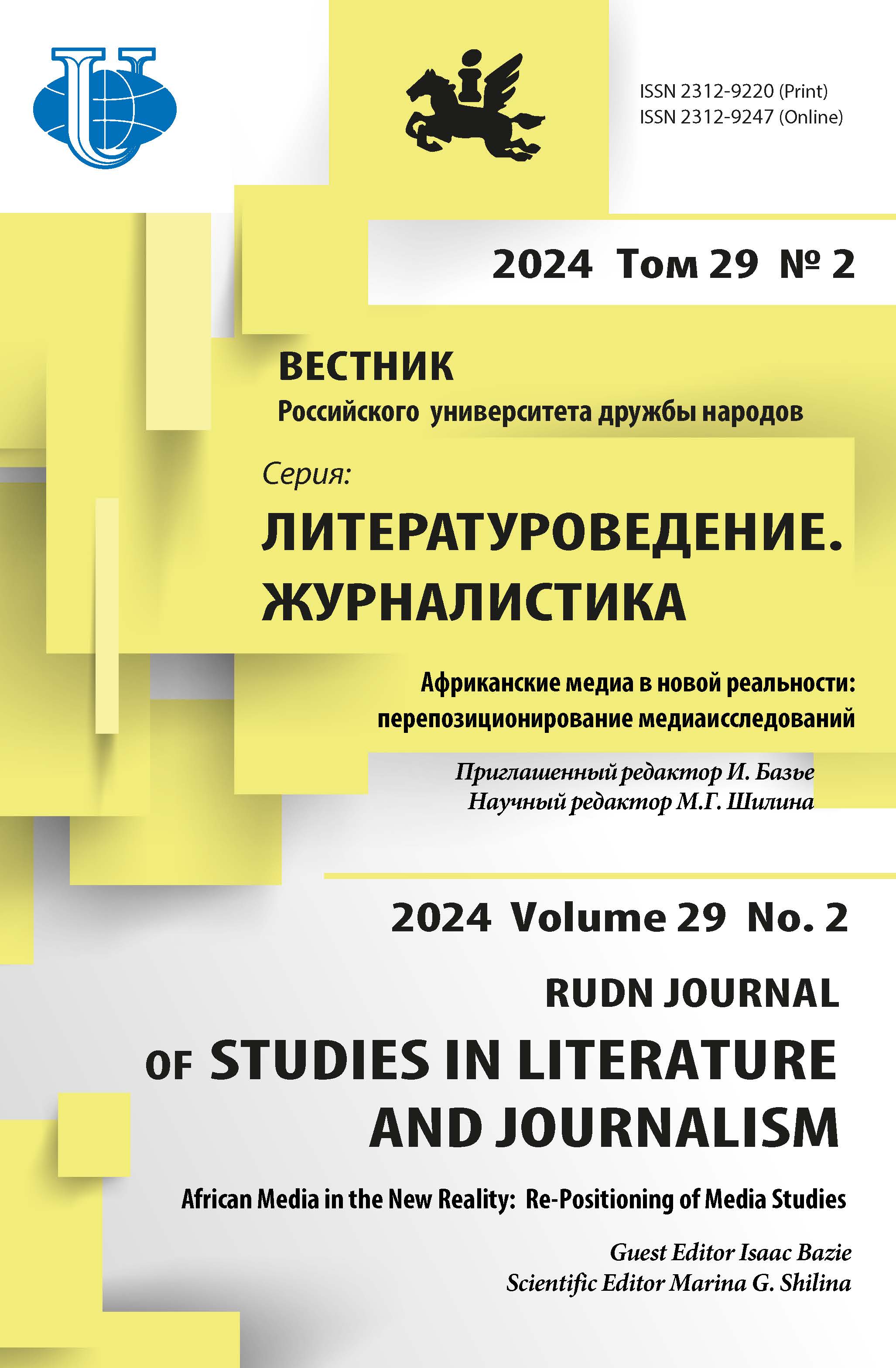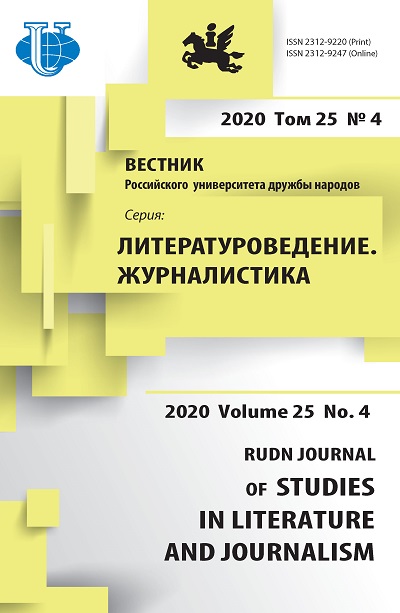Тренды медиапотребления в Грузии
- Авторы: Курманова Д.Б.1, Зарифиан М.1
-
Учреждения:
- Российский университет дружбы народов
- Выпуск: Том 25, № 4 (2020)
- Страницы: 797-807
- Раздел: Журналистика
- URL: https://journals.rudn.ru/literary-criticism/article/view/25464
- DOI: https://doi.org/10.22363/2312-9220-2020-25-4-797-807
Цитировать
Полный текст
Аннотация
В статье проанализировано медиапространство Грузии, прежде всего его тенденции с 2016 по 2020 г.: основные предпочтения и спрос аудитории на традиционные и новые медиа. Актуальность темы обусловлена тем, что Национальное агентство статистики Грузии до сих пор не проводило широких исследований в сфере медиа, отчеты и рейтинги составляются отдельными международными фондами, которые не рассматривают медиарынок в Грузии в целом, в связи с чем эти исследования носят несистемный характер. Таким образом, цель исследования - выявить основные изменения в области медиапотребления Грузии по следующим категориям: печать, телевидение, радио и новые медиа. Пандемия коронавируса ускорила цифровизацию грузинских медиа, усугубив кризис в сфере печати и сделав интернет-площадки более привлекательными для крупных холдингов и независимых авторов в условиях экономического спада на медиарынке и оптимизации. Для выявления данных были использованы методы контент-анализа, наблюдения и социологического опроса. Особое внимание в статье уделено тенденциям, возникшим на медиарынке Грузии с начала пандемии, - основным динамичным изменениям грузинского сегмента Facebook, развитию жанра карикатуры и предпочтениям пользователей социальных сетей. Исследование охватило целый ряд факторов, влияющих на медиапотребление Грузии: возраст потребителей информации, их географическое и социальное положение, национальный менталитет, а также уровень религиозности. Полученные результаты демонстрируют высокую степень медиатизации религии в Грузии, проявляющуюся в том, что церковь стала лидером мнений, определяющим точку зрения большинства относительно темы пандемии коронавируса. Согласно результатам проведенного опроса, население Грузии стало больше смотреть телевизор и чаще слушать радио. Повысился уровень интереса к социальным сетям - в частности, к блогам - как на грузинском, так и на русском языке.
Ключевые слова
Об авторах
Данара Бауржановна Курманова
Российский университет дружбы народов
Автор, ответственный за переписку.
Email: danarakurmanova@bk.ru
аспирант кафедры теории и истории журналистики филологического факультета
Российская Федерация, 117198, Москва, ул. Миклухо-Маклая, д. 10, корп. 2Мохсен Зарифиан
Российский университет дружбы народов
Email: mohsen.zarifian@gmail.com
магистрант кафедры массовых коммуникаций филологического факультета
Российская Федерация, 117198, Москва, ул. Миклухо-Маклая, д. 10, корп. 2Список литературы
- Алваренга Д.Д. Особенности медиапотребления в Бразилии (к 50-летию Grupo De Mídia SP) // Вестник РУДН. Серия: Литературоведение. Журналистика. 2019. Т. 24. № 3. С. 594-599. http://dx.doi.org/10.22363/2312-9220-2019-24-3-594-599
- Ильмухин В.Н. Опыт изучения медиапотребления в многозадачном режиме: методолгия и основные результаты // Вестник Южно-Уральского государственного университета. Серия: Социально-гуманитарные науки. 2016. Т. 16. № 1. С. 69-74. doi: 10.14529/ssh160113.
- Комарова А.А. Основные тенденции медиапотребления в России в условиях динамически меняющейся реальности // Вестник университета. 2018. № 5. С. 162-166. doi: 10.26425/1816-4277-2018-5-162-166.
- Кумар М. Особенности медиапотрбления в Индии: цифровые новости // Средства массовых коммуникаций в многополярном мире: проблемы и перспективы: материалы X Всероссийской научно-практической конференции. М.: РУДН, 2019. С. 311-314.
- Назаров М.М. Цифровое поколение двухтысячных: особенности медиапотребления // Информационное общество. 2016. № 1. С. 27-36.
- Чернавский А.С. Особенности современного медиапотребления и феномен новых медиа // Власть. 2015. № 7. С. 73-75.
- Jangiani G. The Georgian media struggles to cope with COVID-19 // New Western Europe. URL: http://www.neweasterneurope.eu/2020/05/07/ (дата обращения: 01.09.2020).
- Tsomaia T. Georgia: Coronavirus and the Media // European Journalism Observatory. URL: https://www.en.ejo.ch/ethics-quality/georgia-coronavirus-and-the-media (accessed: 20.08.2020).
- Tsotniashvili E. State of Georgian media since the Rose: Master Thesis. Tbilisi, 2010. URL: http://ies.tsu.edu.ge/data/file_db/tsotniashvili/Etuna%20Tsotniashvili%20Rose%20Revolution.pdf (accessed: 20.08.2020).
- State of Media in Georgia: Public Opinion Poll Results / Transparency International Georgia. URL: https://www.transparency.ge/en/post/state-media-georgia-public-opinion-poll-results (accessed: 28.08.2020).
- Demytrie, R. Coronavirus: How 'three musketeers' helped Georgia fight virus / BBC News. URL: https://www.bbc.com/news/world-europe-53269000 (accessed: 01.09.2020).
- Internet Ownership in Georgia / Transparency International Georgia. URL: https:// www.transparency.ge/en/post/internet-ownership-georgia (accessed: 28.08.2020).
















